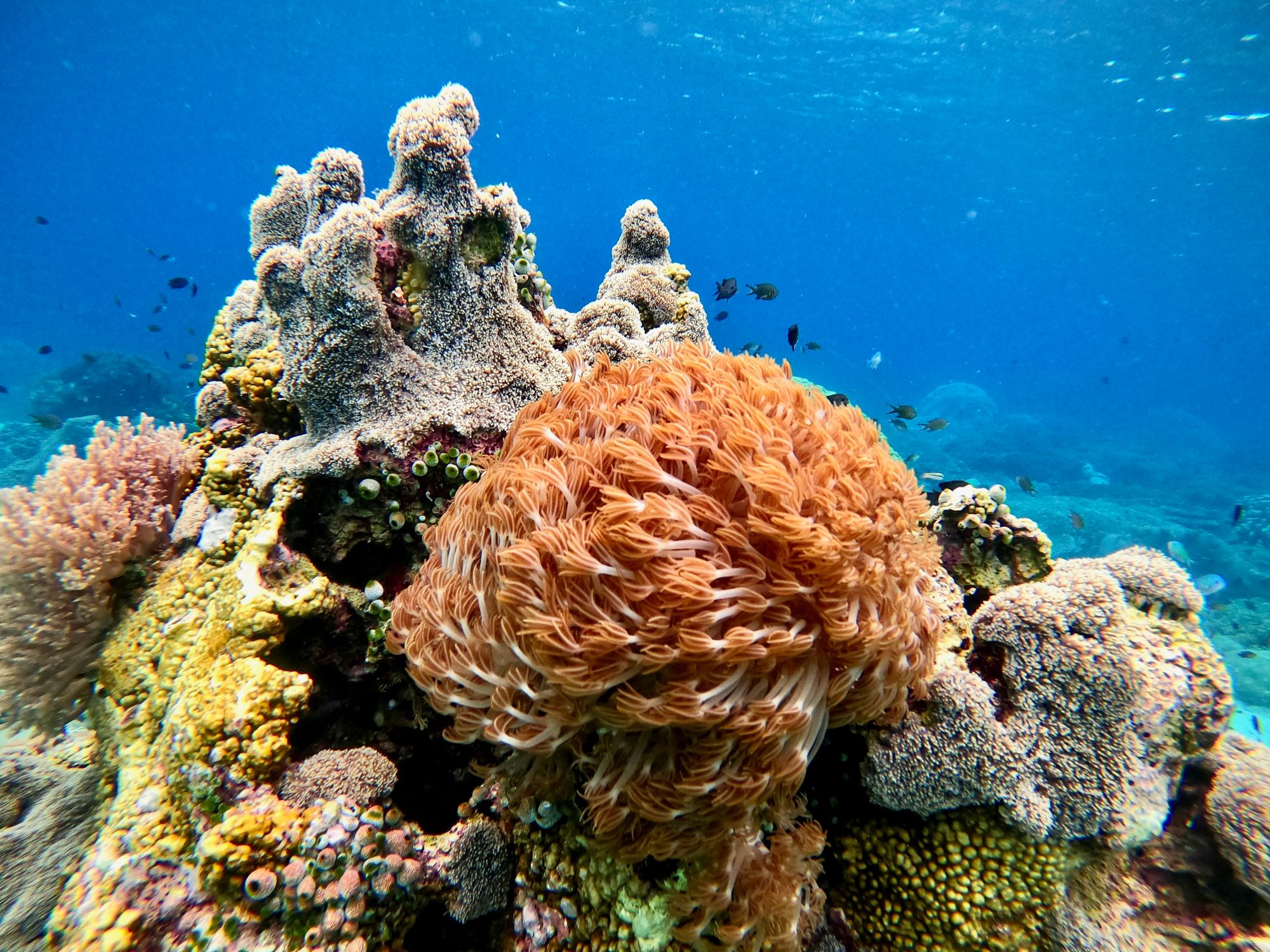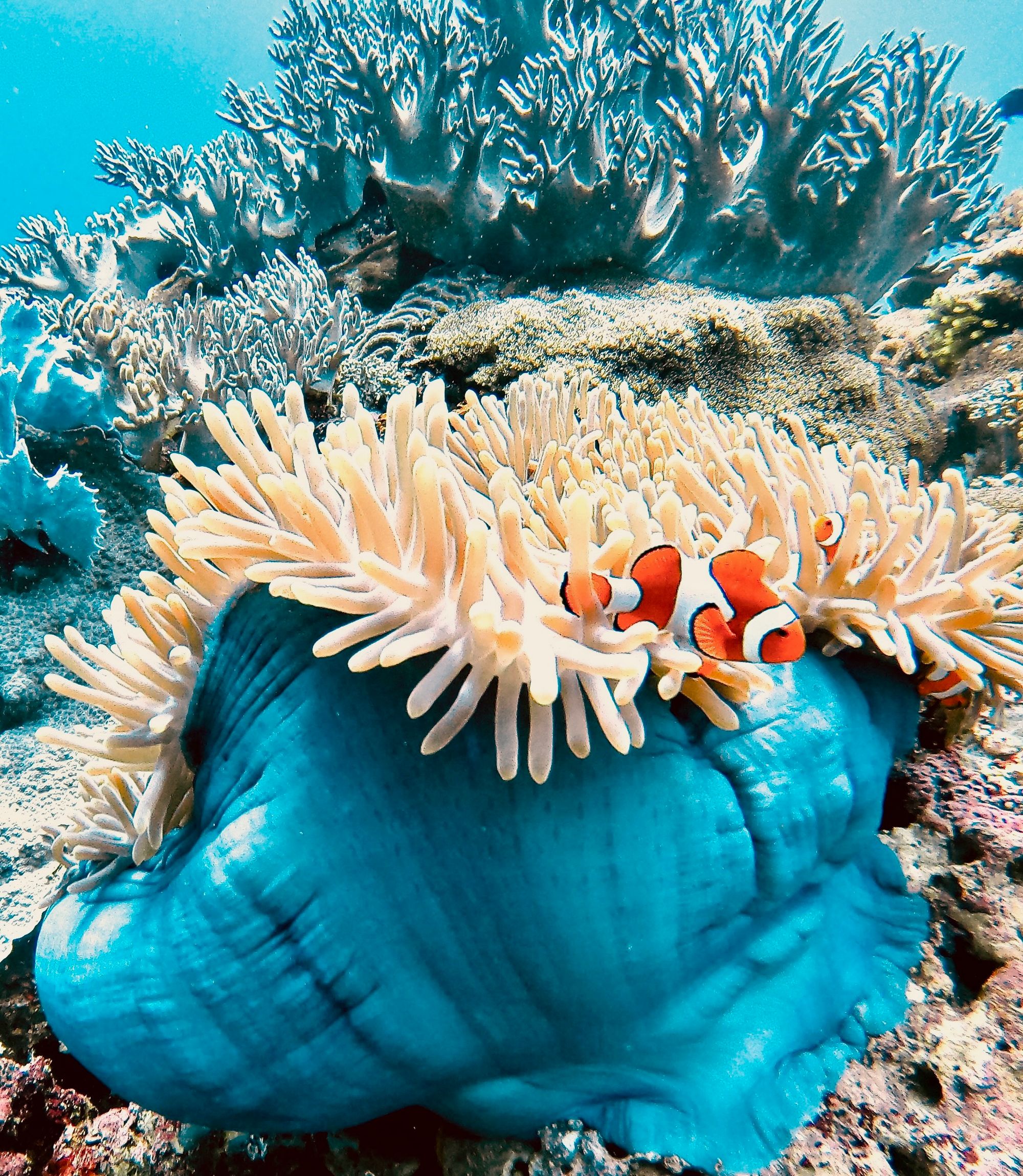Walking with dragons
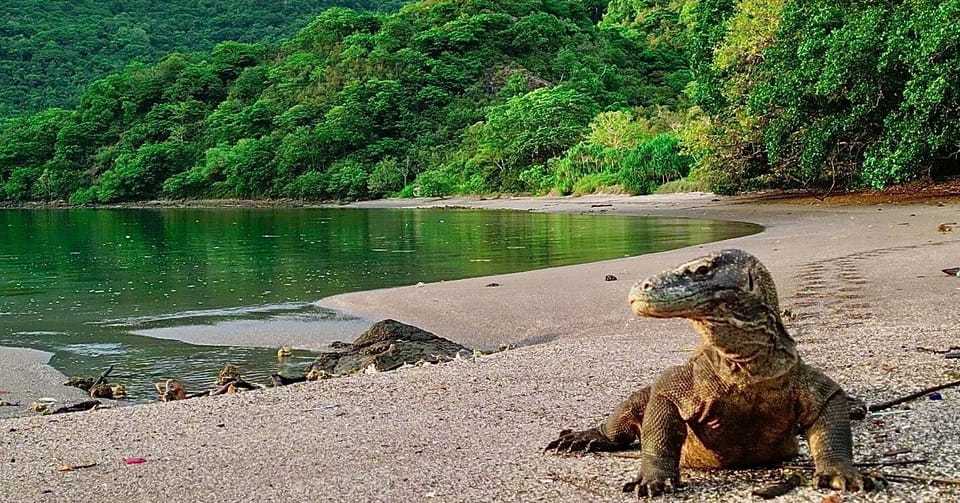
I'll start by saying that Komodo National Park exceeded all expectations. Its relative fame and proximity to Bali had us imagining swarms of tourist boats as well as ruined coral. We arrive expecting to see the dragons and get out as quickly as we can. Well how wrong we were and gladly so!
Perched on the west coast of Flores is the province capital and main tourist hub of Labuan Bajo (LB). We anchor in a quiet bay just outside of town and find our friends Wild One already there, as well as another two kid boats we've met in the Whitsundays and we know Brave is in the area as well. A bit of a party!
We spend a day going to the traditional markets to reprovision and Graham also does the fuel run. Not much sailing has taken place in our five months here so this is a regular chore we do every month or so. It's mainly Graham to be honest but I've had the misfortune of being dragged into it a few times as well. And you can forget about pulling up to a dock to fill up like we did in Australia, in Indonesia you either pay someone to bring the fuel to the boat (in jerry cans) or you do it yourself. Our fuel tanks hold 800 litres with each jerry can carrying about 20 litres, so you can do the math there.
Fuel run is a bit of a misnomer really, as very little running actually takes place. Instead, it is a painstakingly slow process of loading empty jerry cans into the dinghy, driving into town and finding the nearest Pertamina petrol station to fill them up. The means of transport to Pertamina really depends on the town and the distance. We've hired trucks when more than one boat was involved, ridden ojeks (scooter taxi - you'd be surprised how much you can stack on these) and on one occassion, Lara and I hailed a motorised rickshaw to do all the fresh food shopping and fill two jerry cans with fuel. Anything goes basically. Getting fuel is definitely Graham's least favourite boat job but in LB it proves to be pretty straightforward; there is a Pertamina right on the water so it's a short dinghy trip to the nearest dock and a couple hundred meters walk to the bowsers. There are locals there to help too so the job is completed in about an hour or two. Of course, this is the easy part as the fuel must get from jerry can to fuel tank somehow but this is a task and a story for another day.

Although you could spend weeks just lounging around the resort pools and restaurants at LB, we decide to head out to the islands on the very next day and find Brave anchored at our first stop. They are leaving but we manage to get all the local info out of them before they go and we spend an hour having fun jumping off a very high dock nearby where everyone jumps off (including me!) and Graham impresses with his backflips.

The next day we head to Komodo island, specifically Komodo village where we hear you can hire a local guide with a very long stick and take a stroll through the surrounding country side to spot komodo dragons. The Komodo village is situated in the same bay as the official entrance to the National Park managed by authorities. The fees to enter are quite steep for foreigners but this is where all the land tourists are brought by boat from LB to explore the official trails with a ranger. We are somewhat intrigued by the fact the village is in apparent competition with the park but don't think about it too much at the time as there are dragons to see.
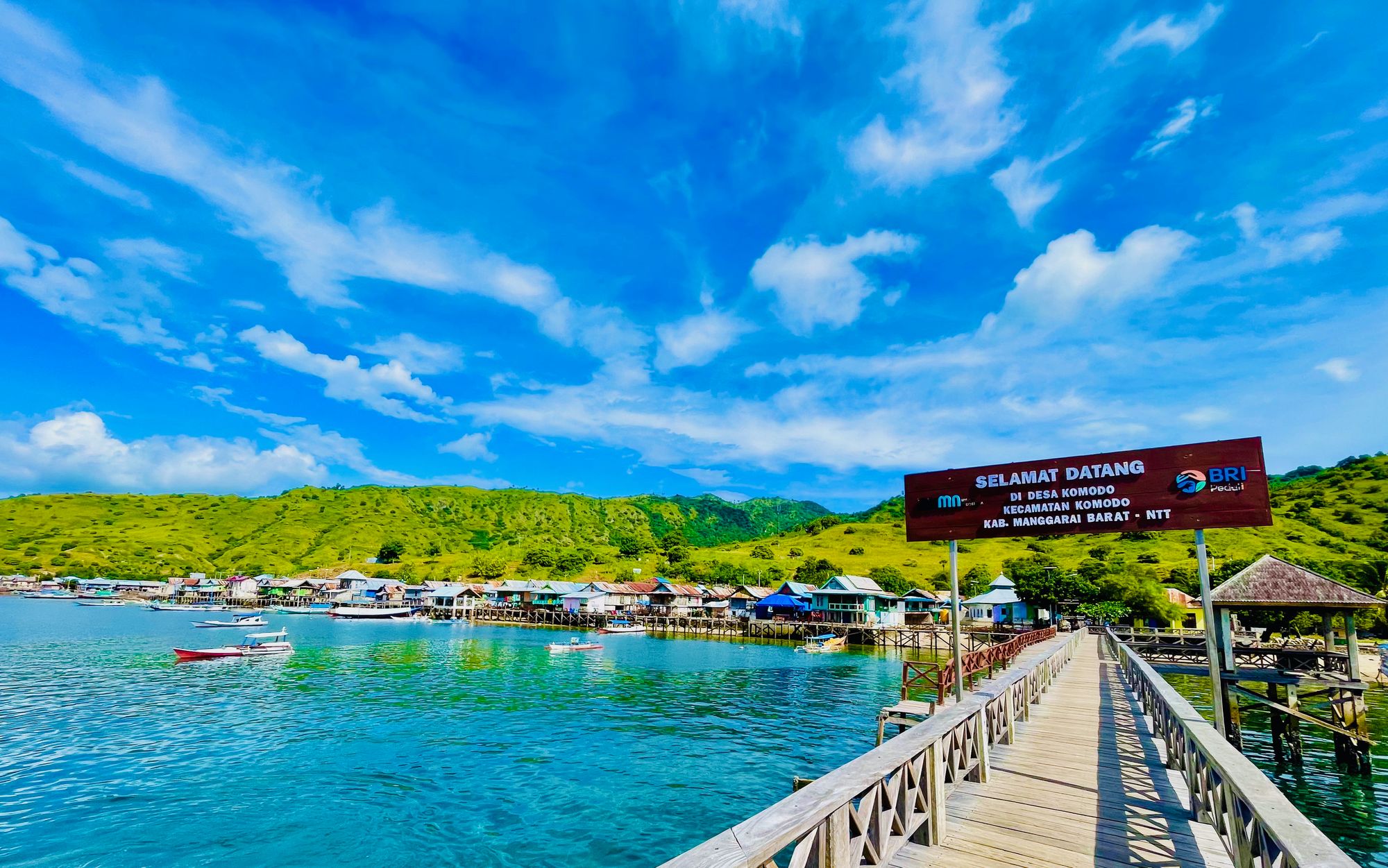
Our guide, whose English is better than my Bahasa, tells us that the village wasn't always located on the water, with the residents moved from another location further inland after the creation of the national park. I make a mental note to research a little more about this as it sounds just a tiny bit controversial.
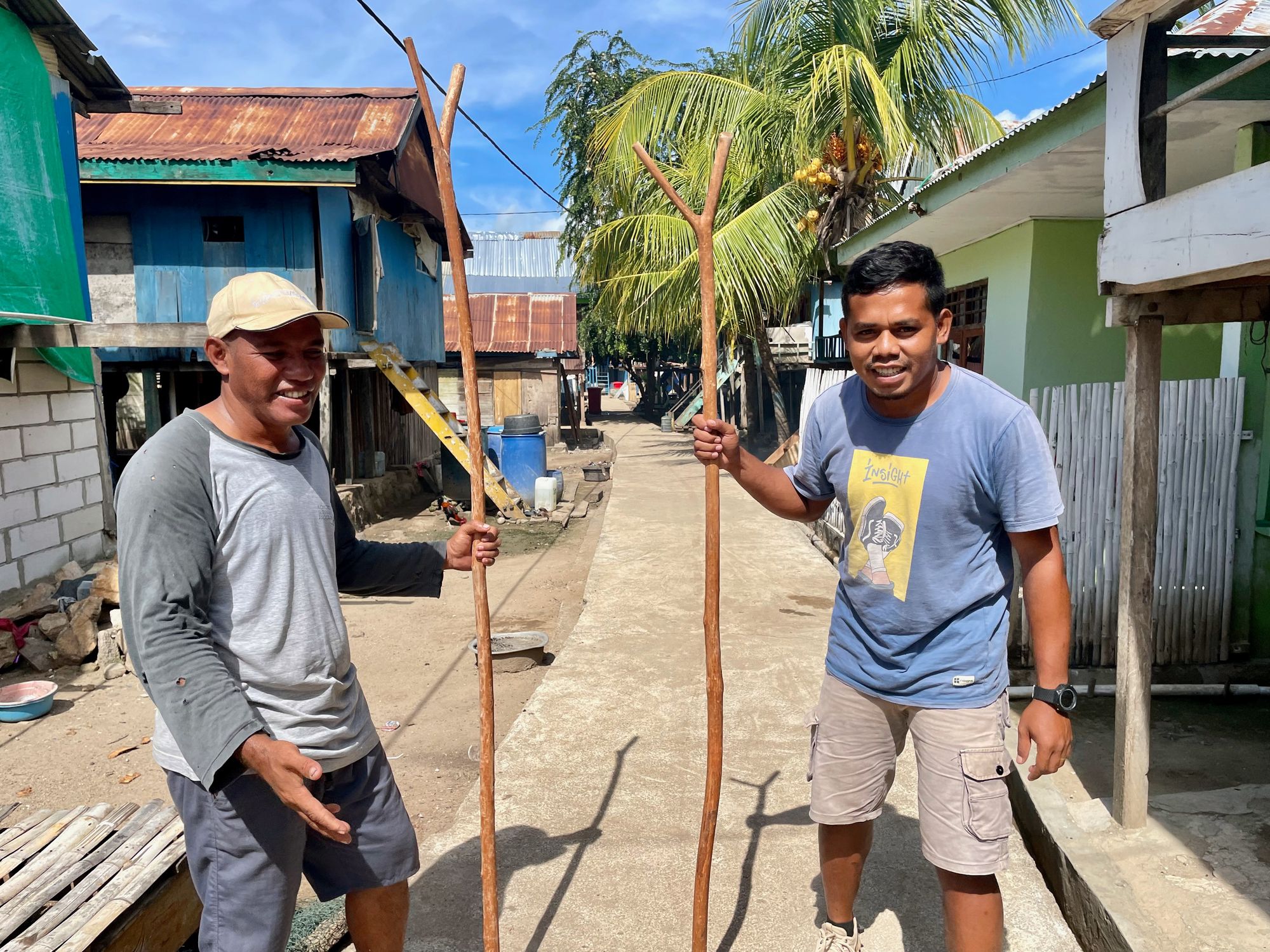
My brief research into the matter proves controversial is too a mild a term for what happened to the Ata Modo people, the name of the Indigenous community living on Komodo Island. Not only was their village forcibly relocated in the early 1980s, but they are now confined to a small enclave within the park with no legal or agrarian rights to their customary lands. More recently, the provincial governor announced plans to move the Ata Modo off their island in 2019. The community is now fighting to gain agrarian rights over the land they live on as well as to regain control of the lands that were taken from them.
It seems the government has also steadily been rezoning land in the park and granted licences to two private companies to build luxury resorts on four currently protected islands, including Komodo, this despite protests from community groups who instead advocate for community led tourism. The komodo dragon is in fact endangered and can only be found on these four or five islands in the park. I am really glad that we chose to go to the village and not the national park office for our guided tour and really hope that more people support their efforts at community led tourism.
Back to the tour. The village is fenced to keep the dragons out but we're told a baby was killed here when a dragon somehow broke through. Dragons kill by poisoning their prey, with the venom causing a sudden drop in blood pressure which sends the prey into shock while also stopping their blood from clotting.
We hire two guides reasoning this gives us two sticks to fend off any dragons on the trail. As we walk through the village we spot our first dragon and it's a baby. Apparently baby dragons are ok and cannot harm you. Not sure at what age they evict them but the guides seem non-plussed about it.

Five minutes later, we're stomping through rolling green fields covered in long grass with one guide at the front and one in the back of the formation. I don't mention to Graham that the most poisonous animal on the island is not really the dragon but the green viper, one of many poisonous snakes that live here.
The guide spots a large dragon after poking around some bush and annoys it enough to come out. The dragon makes a brief appearance before it dissappears into the long grass beyond, which makes me wonder about how many others are lurking around. Their hunting methods are 'stealth and power' apparently, they lie in wait along game trails, patiently waiting for a deer or a boar to come by. We've seen quite a few boar and deer along the beach near our anchorage and they seem quite jumpy, understandably so.
On we go on the narrow trail, now hitting bushland. At a very small hill, the lead guide motions us to join him where another dragon emerges on the trail slightly uphill from us. This seams like an unfair advantage and the guide evidently agrees, urging us to "Go, go, go, go!", presumably in the opposite direction as this dragon is definitely interested. It flicks its tongue as it walks towards us, perhaps a sign of agression or maybe dragon for licking your lips before a nice meal. In any case, menacing on a primal level. Our instincts kick in and we all scamper down the hill, panicked laughter interspersed with hurried looks behind to check on the predator's progress. We stop at a flat semi-clearing as the dragon now slows down still flicking its tongue as it purposely heads our way. The guide pokes his long stick at it and the dragon thus redirected but evidently not disturbed turns to stop at a tree where a second later, it does a long pee followed by a poo. The smell is pungent but familiar and it is somehow comforting to know dragon poo smells exactly like poo. If you want to see the full video of our komodo walk, check it out here on the Ausbos Instagram page.
Our dragon thirst thus quenched, we head back towards the village. Women do their laundry on the banks of the creek as we walk past, just downstream from where a dragon crossed minutes earlier. Totally normal.

Next stop is Rinca island at the very southern end of the Komodo archipelago, where dragon spotting on the beach is the preferred pastime. Sure enough, dragons mooch around on the beach mere meters from where we are anchored. Graham pulls the drone out and flies it around the creatures, getting closer and closer in the quest for a perfect shot. I am convinced the dragon will snatch it any second and fervently hope that our insurance covers provoked dragon attacks. He gets his shot and we even squeeze in a dive where we ambush numerous blue spotted rays and I am foreced to relinquish a large and shiny cowry shell which unfortunately has a resident and cannot be claimed as a treasure.
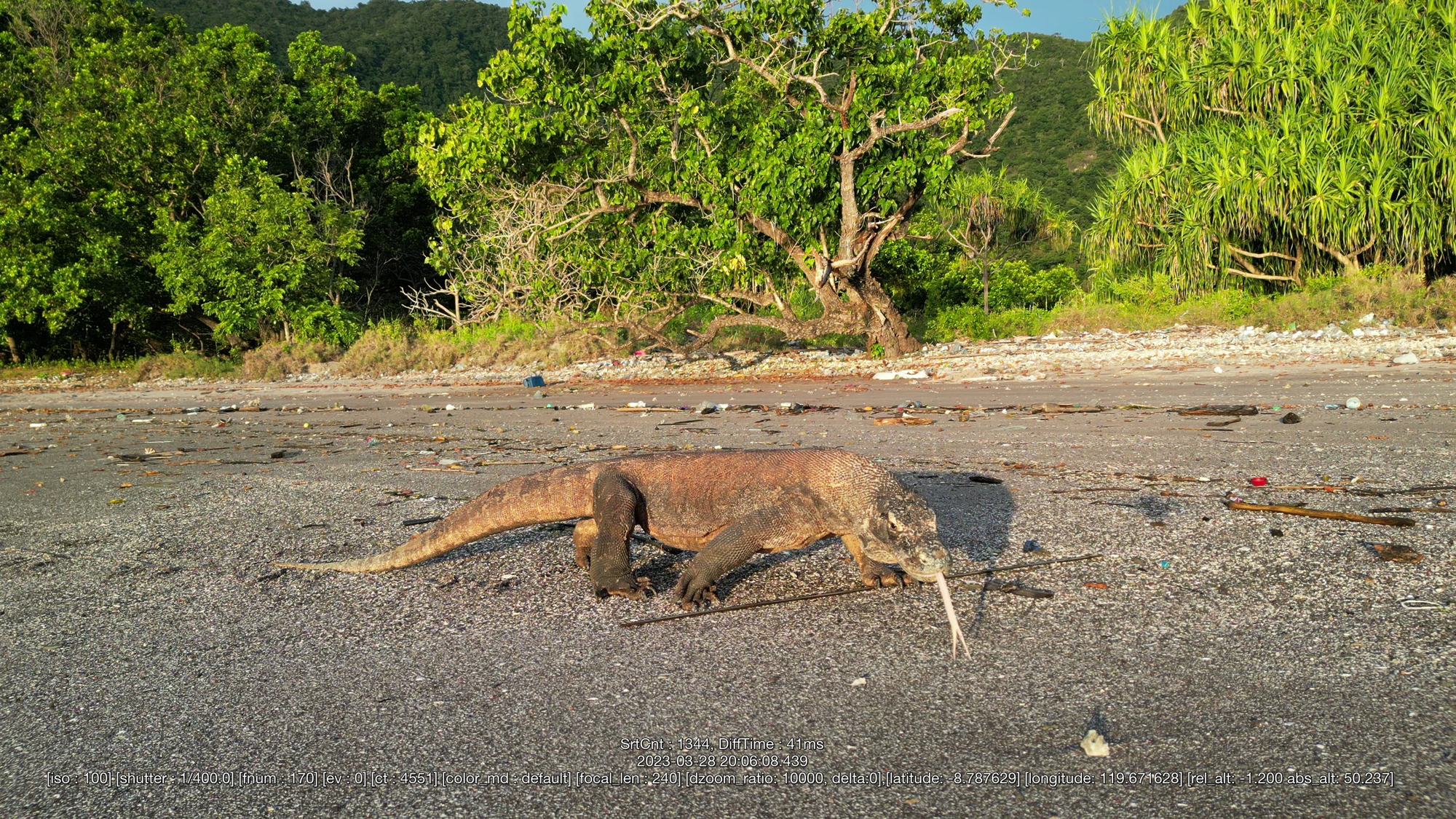
We move onto Makassar reef where powerful currents rule and manta rays hang out for cleaning and feeding. The planned drift snorkel (where you dinghy up to the start of the reef and drift down with the dinghy tied to one of us) is way better than expected and not only do we spot huge manta rays but also turtles, giant trevallies and other big fish as well as some decent coral.
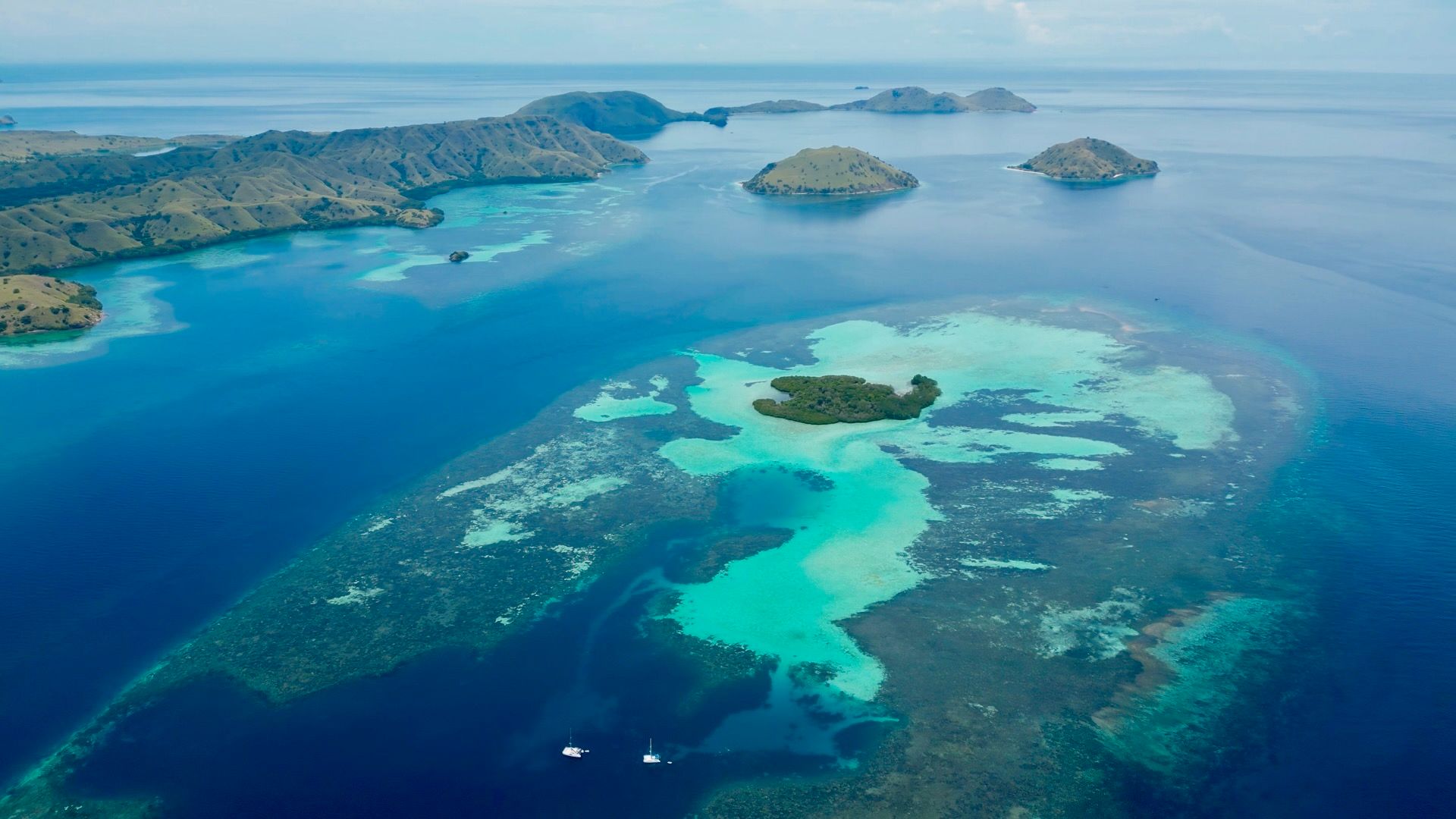
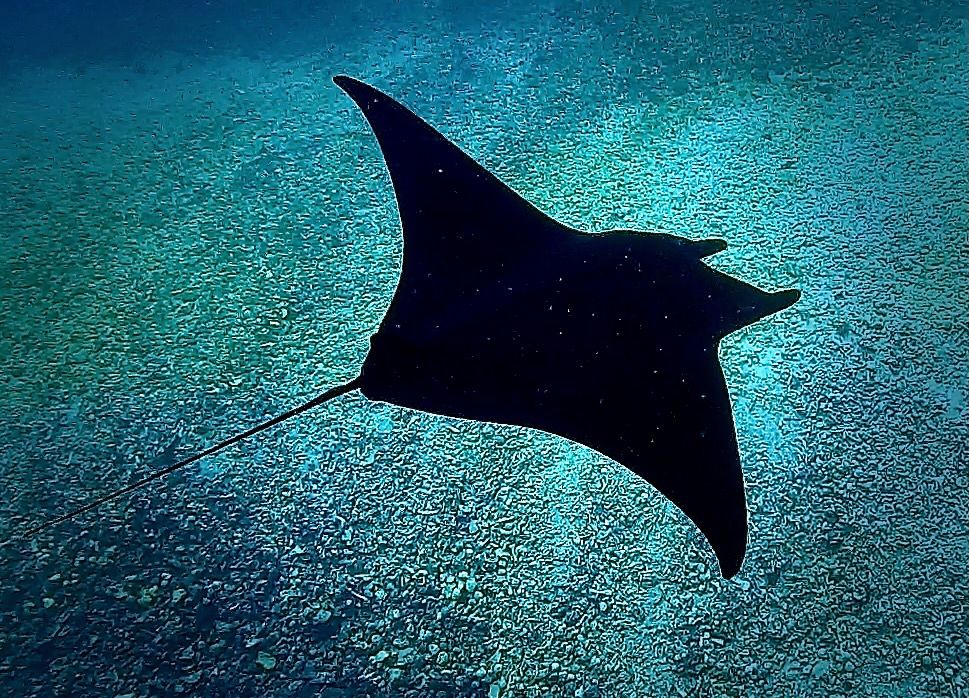
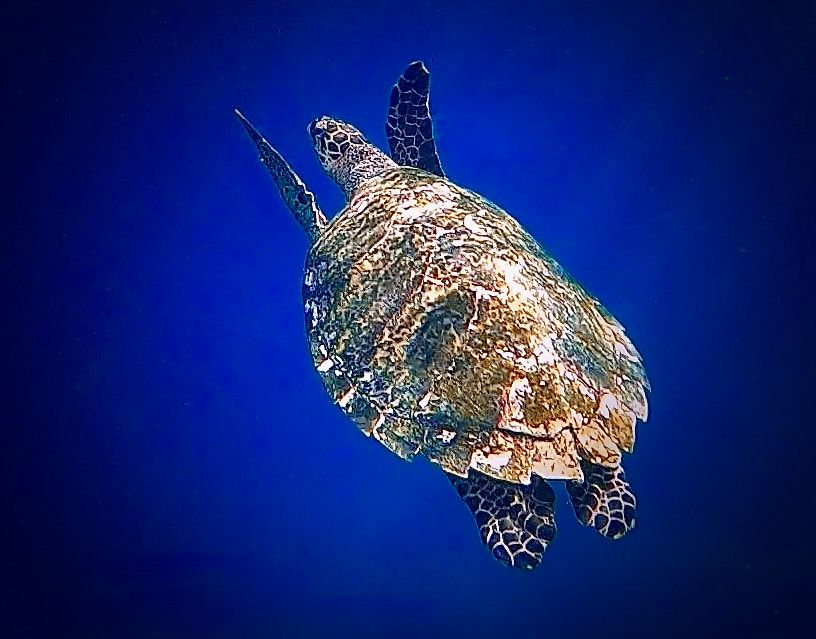
This area is a marine park but that doesn't usually mean much in Indonesia as local fishermen are almost always around and fish attracting devices (FADs) are scattered across every bay decimating anything bigger than a sardine. Komodo is the first place including the diving mecca of Raja Ampat where we see big fish around so the marine park logo clearly means something here.
Our last stop in the Komodos is Banta, a large island in the north west. We don't know much about it but it delivers the best dive of the trip yet, on an umarked beach not in any guide. The coral is beautiful but the best thing about it is the visibility, the clearest water in Indonesia yet. It's a fine way to say good bye to Komodo Islands.
